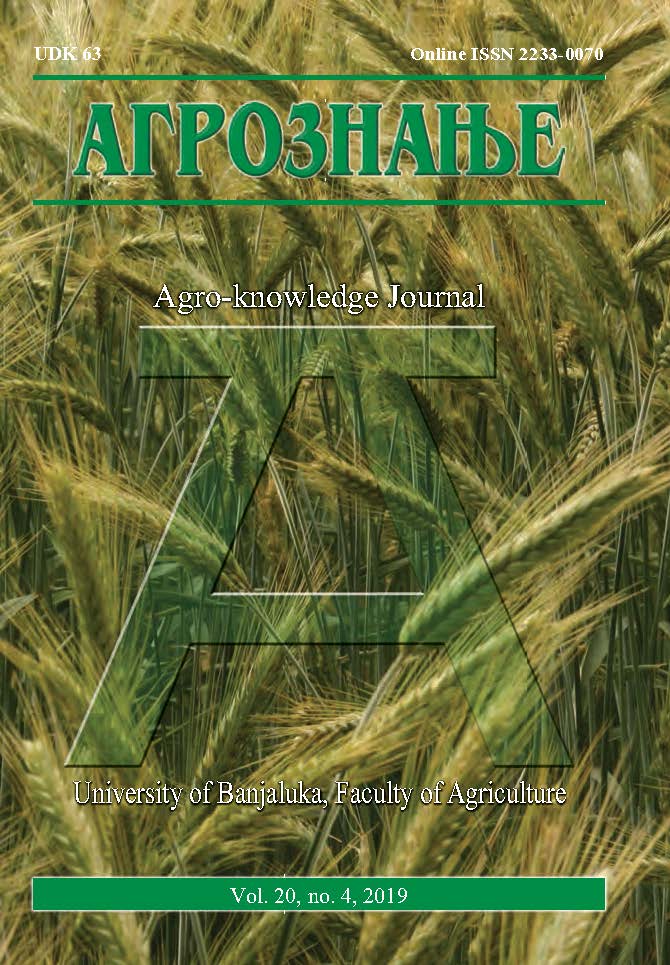Phenological and Morphological Traits of Important Hazelnut Cultivars in North West Bosnia
DOI:
https://doi.org/10.7251/AGREN1904197SAbstract
The paper presents the results of the analysis of phenological and morphological characteristics of 3 hazelnut cultivars present in the production plantation in the north-western Bosnia and Herzegovina. The 'Rimski', 'Istarski dugi' and 'Tonda Gentile Romana' cultivars served as research material. Blooming time ranged from December to March. For all cultivars, the occurrence of dichogamy, precisely protandry, was observed. The longest flowering period of both male and female flowers was found in the 'Tonda Gentile Romana' cultivar. The 'Rimski' cultivar had the highest fruit weight (3.04 g). 'Tonda Gentile Romana' had the highest kernel weight (1.50 g). The highest kernel percentage (49%) was found in 'Istarski dugi'. The length of male catkins ranged from 21.73 cm to 29.76 cm. Statistically significant differences among cultivars were found for the following traits: the length of male catkins, the number of female flowers in glomeruli, and the number of nuts on a fruiting shoot. The 'Istarski' cultivar had the highest average length of male catkins (29.76) and the highest number of female flowers in the glomeruli (7.32). 'Tonda Gentile Romana' had the highest number of fruits (20.93) on the shoots. All three cultivars have proven to be good varieties in terms of phenological and morphological characteristics, so they can be recommended for intensive production of this nut crop.Downloads
Published
2020-05-12
Issue
Section
Articles

